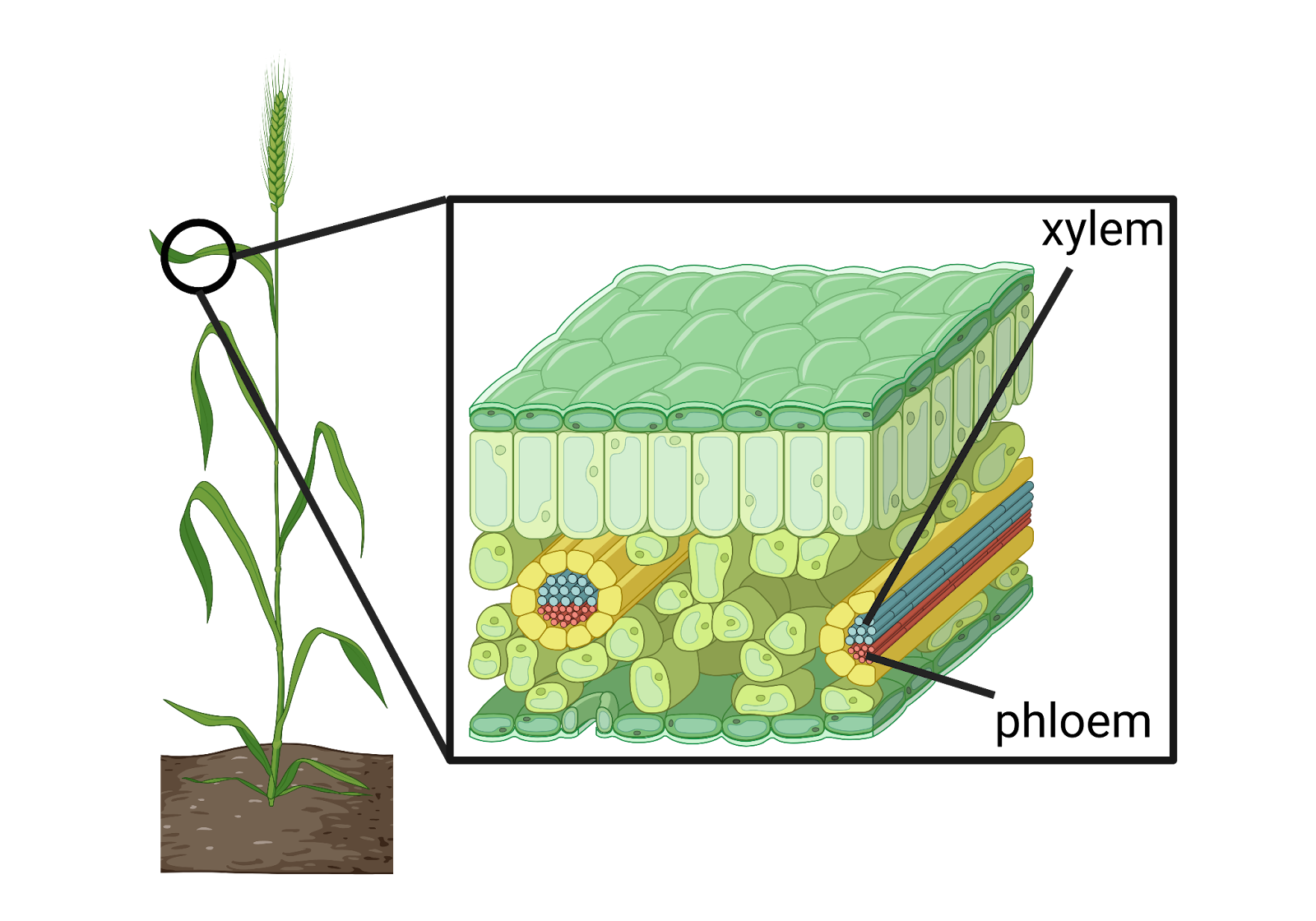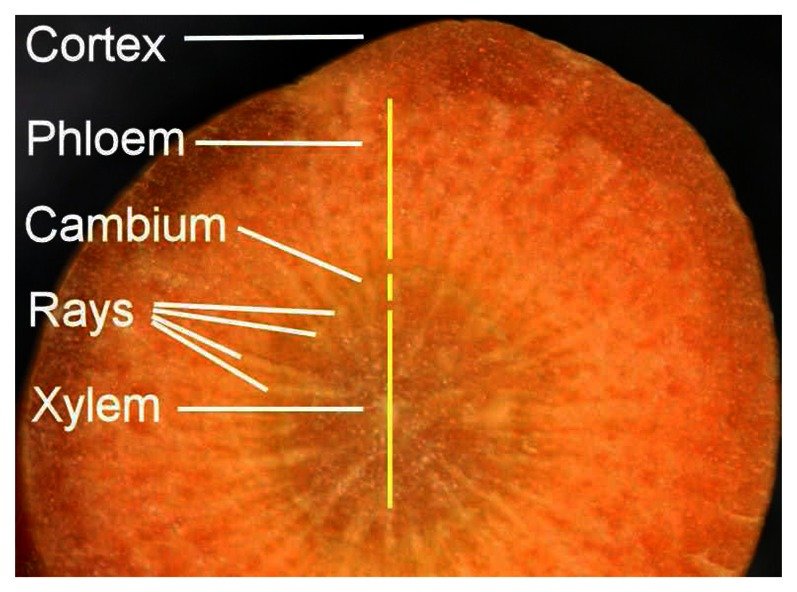by Imani Madison
Most land plants (specifically vascular plants) have evolved a complex vascular system to extract water and food from terrestrial habitats. The plant vasculature consists of a network of tube-like cells that deliver sugars, waters, signals, and other nutrients to organs as needed. It also helps provide structural support for plants to stand upright, especially in more complex plants like trees. Plant vascular tissues are called the xylem and phloem (Figure 1). Xylem transports water and minerals taken up by roots up to the leaves. Phloem transports sugars produced by photosynthesis and signaling molecules like hormones from source to sink tissues. Source tissues include leaves that photosynthesize and make their own sugars or roots that take up nutrients from the soil. Sink tissues include roots that need sugars or leaves that need minerals from the soil to be delivered to them. If you look closely at a slice of carrot, you can even see rows of phloem and xylem across the radius of the slice (Figure 2). As fruits, seeds, and roots develop, sugar is unloaded into their tissues from the phloem. As trees grow to incredible heights, they draw water up from root to tip by their xylem cells.

Figure 1. Xylem and phloem cells are arranged like tubes extending throughout the organs of vascular plants, such as the leaves as is shown here. Image created by author in BioRender.
Phloem and xylem cells are heavily modified as they develop to make them able to carry high volumes of sugars and water. Xylem cells undergo programmed cell death in which their organelles are degraded, leaving them hollow and functionally dead. Then, cell wall components such as lignin are laid on the cell walls in thick layers to reinforce the cell’s mechanical strength. In fact, wood is an example of this process. Once xylem cells are formed, water is able to move up the plant from one xylem cell to the next by a process called transpiration. Transpiration is when water molecules evaporate from leaves, like “sweating.” Water molecules are attracted to each other by cohesion so as water evaporates, more water molecules are sucked upwards through xylem cells similarly to when you drink water through a straw.
On the other hand, phloem cells undergo only a partial cell death. Most organelles are removed (notably, the nucleus) but adjacent cells called companion cells provide metabolic support to phloem cells so they are not functionally dead as xylem cells are. Phloem cells are also reinforced but with fewer cell wall layers without lignin. Phloem cells also have sieve pores at either ends that can be closed and opened to control where phloem sap is transported. Unlike in xylem cells, phloem cells move their phloem sap by a process called translocation in which proteins pump sugars between phloem and sink tissue cells. Photosynthesizing leaves load sugars into the phloem using transport proteins and the resulting buildup of pressure pushes the sap down phloem cells into tissues that need sugars.
Without the evolution of the plant vascular system, our world would be a very different place. For example, non-vascular plants, such as mosses, liverworts, and hornworts, rely largely on capillary action and diffusion of water and molecules between their cells, so their growth is limited to small sizes and in relatively moist environments. A vascular system, however, helps plants survive across a wide range of climates, grow to large and complex sizes, and store sugars and nutrients in their leaves, seeds, and fruits.

Figure 2. Carrot roots are packed with so many xylem and phloem cells that you can see them in rays across a carrot slice (Image source)
